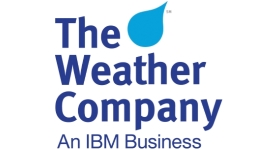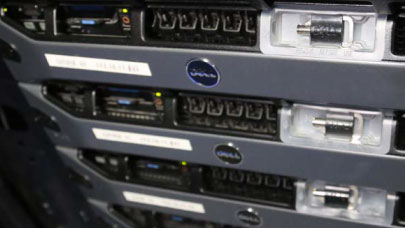Let’s start with the physical manipulation of cartridges…
This is a very important point. I shall begin by saying that all of the problems associated with handling the cartridges are a misunderstanding, once again generated by the lack of communication between suppliers and users. There are two basic things you should know about this question: tape, by nature, does not generate excessive handling of the cartridge. The importance of the physical manipulation by an end user depends on their own decision on the degree of security and the number of slots he wishes to integrate and work with. For example, I often make configurations for users who do not want any recurring contact with tape cartridges. In other words, they even do not want to touch a tape over 5 years. Such users ask me to draw them a configuration in which they will practice two copies, and both copies will remain in the library. This is not a problem for me, since the removability of tape is a security measure against various incidents such as fire, burglary etc. By removability, we mean the act of pulling the tapes out of the library in order to store them in another location. The 2nd external copy that ends up off-site is advisable, but if a user feels confident enough with the conditions of use of their library, and decides to leave the second copy within the library, they would still be working on a storage solution that is superior to a Disk based solution. To this we can add, that tape is the safest way to protect against virus attacks or hackers. Indeed, a tape based system is actively connected with the server only when it is in a backup mode. When the backup is complete, the system goes ”off”; it is therefore decoupled from the computer system and the data cannot be affected by eventual virus attacks. For reasons of extreme security, it is also possible for a user to practice a rotation on two different sets of tapes so that if, God forbid, a set of tapes is affected by a virus, the second can still restore the data that will be recorded.
To return to this question of physical manipulation of the cartridge, I would advise users to choose scalable libraries such as Oracle’s SL-150 and to avoid, as much as possible, autoloaders that are limited to 10 or 24 slots with a maximum of one or two drives: Autoloaders offer an unflexible and limited scale of storage. If you ever make an error in estimating the storage capacity you will need and you overpass the capacity of your Autoloader, you may pay a steep price for a small mistake. A library such as an SL-150 is like lego, the user can decide on their own about the number of drives and slots they will need and can correct the size of his library after two or three years if they notice that the growth in storage capacity is larger than expected. Therefore, there is no reason why physical handling should be a problem for those that use such a scalable Library.
Finally, the exceptional progress made regarding the reliability of the cartridge allows users to change their storage habits and greatly simplifes the workload required by data storage tapes. It is clear that we have to significantly simplify the backup process and LTO7 tapes do broadly allow this.
What do you mean by simplify the backup process on tape?
The communication to users and, the availability of tape solution suppliers in relation to end users is, in my view, the main challenge of tape technology, and why the new Barium Ferrite tape can be a success or a failure. I’ll give you a specific example : sometimes it still occurs that I interact with users who use 5-6 different sets of tapes, by rotation, in order to provide maximum security for their data (for instance in case of data loss etc..). I can understand why they took such a decision 15 years ago, however, they no longer need to spend so much money buying tapes, and time in handling these tapes. In the case of SMEs that do not store more data than 100-150TB, a full weekly backup plus a second copy off-site are more than enough to fully secure the data. The LTO7 tape drive has nothing to do with former LTO4 or LTO5 generations. The long term conservation ability of Barium Ferrite is different than that of any other tape technology. Just to give you an example: LTO3 tapes, LTO4, LTO5 and 30% of LTO6 tapes are made with the MP technology. The metal particles are made from iron. Therefore they will naturally oxidize over time. The cells that compose it will, then, no longer generate the read and write process. There will be a performance loss because these cells will become invalid. On the other hand, Barium Ferrite is already an Oxyde. There is no deterioration phenomenon due to oxidation. The LTO tape can therefore maintain its initial performance. In other words, the user can significantly optimize its backup mode; he won’t need to generate as many different copies as before: tape backup has become as simple as backup on Disk, with, in addition, all the benefits of tape technology, starting with the fact that we can preserve data for decades. In contrast, I continue to advise companies not to use the same tape set for more than a year when practising daily or weekly backups on tapes: it is true that you can overwrite the data. Contrary to the specifications of LTO consortium that indicate that we can write and rewrite over 200 times on a single tape cartridge, I think it is wiser to be limited to 50 or 60 full use of the tape. Two yearly sets of tapes are more than enough: for a user who needs to store 60TB of data, two sets of 10 tapes per year seem more than reasonable. It’s cheap and it can pay big.
© HPC Today 2024 - All rights reserved.
Thank you for reading HPC Today.






























